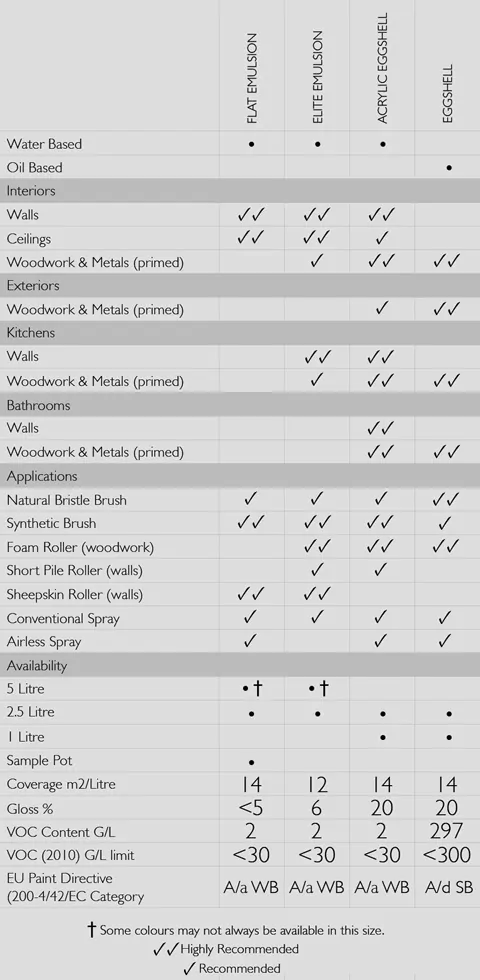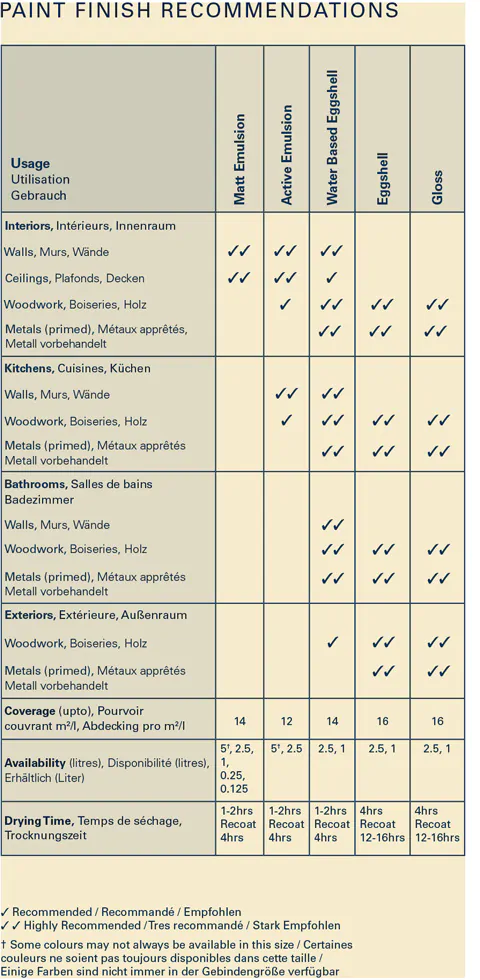Paint Buying Guide
Choosing the perfect colour and type of paint is key to pulling your room design together and giving your space a cohesive style and effect.
Wall colour is one of the most versatile design elements and can add drama and interest to any room. Paint is also easy to change and relatively inexpensive. A new wall colour is a budget-friendly way to breathe new life into almost any space.
Our buying guide will ensure you have the right paint and paint colours for your next decorating project.
The number of paint options on the market today can be overwhelming, and we specialise in eco-friendly and designer paint from brands such as Little Greene, Zoffany, Andrew Martin, Sanderson and Designers Guild.
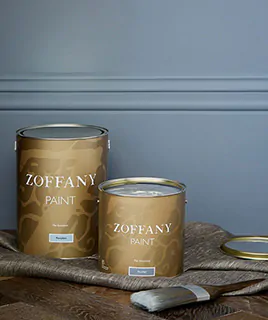
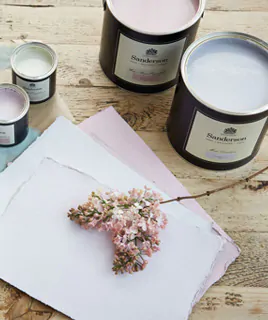
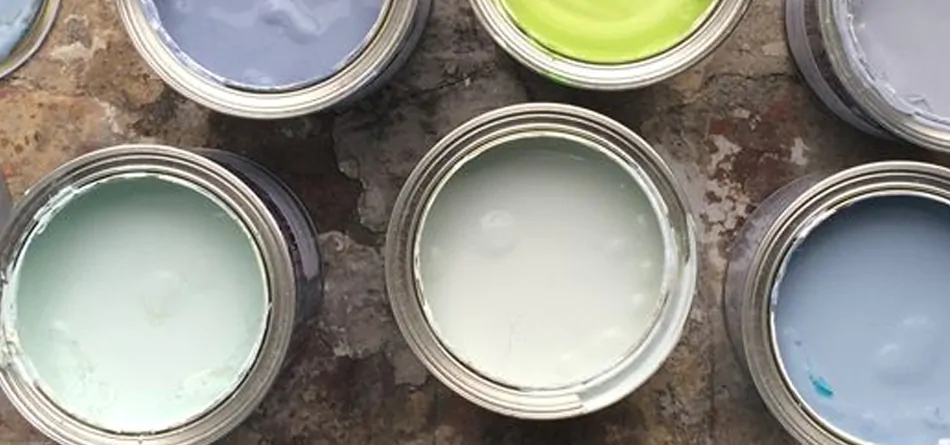
Paint is available in hundreds of different colours and finishes, making it difficult to determine which paint is right for your project. Are there hard and fast rules, or is it a matter of personal taste? Actually, it involves a little bit of both.
Our colour preferences tend to be very personal when choosing paint colours. We often gravitate to certain colours subconsciously. Our colour preferences usually develop at a young age. Naturally when considering paint colours, you would not want to paint an entire room in a colour that you loathe; however, it is also important to understand how colour works in order to create a space that you love and enjoy.
"When choosing a wall colour, it is important to tailor it to the location and function of the space."
For example, is the room an office that you use mainly during the day or a bedroom that is only used at night? Is the room a busy public space such as a family room or a private area such as a bathroom? You should also consider natural lighting and the direction of the room when selecting your colour. A paint colour can look drastically different depending on the direction, shape, and size of the room. For example, it may be easier to select colour for a South-facing room since they receive better natural light than North-facing rooms.
A bold, dramatic wall colour is best suited for less-used areas, such as hallways. Even though white can make a space seem brighter and larger, a richer colour can make the room feel calm and welcoming. Warm tones and deeper colours can make a somewhat dark space feel more cosy and intimate. Often this can be down to individual perception and preference however.
Also don't forget Paint can draw attention to a room’s architectural features. Adding colour to cornicing, skirting, floorboards, or ceilings can change the mood and feel of a room.
Painted walls with crisp white woodwork make a room appear classic and traditional. As this example from Zoffany paint shows:
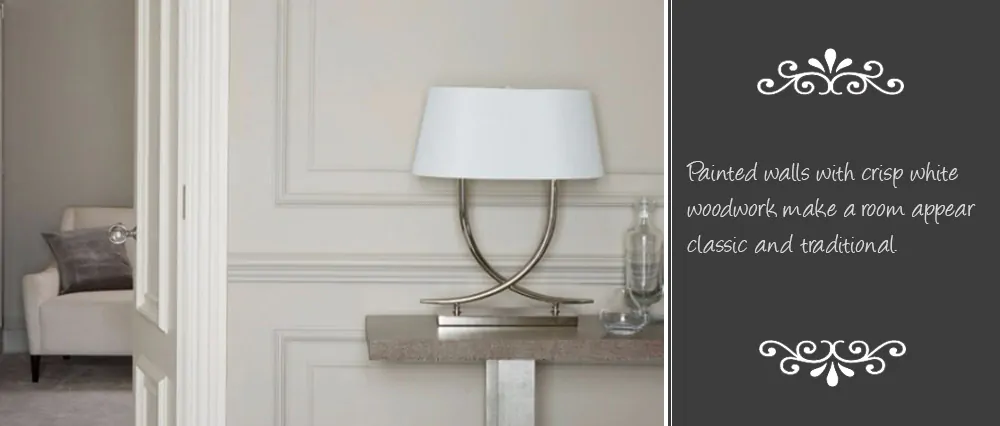
On the other hand, wallpaper or a light wall colour with dark woodwork can give a room a more decorated effect.
As a general rule, lighter colours tend to give the illusion of more space while darker colours add intimacy by making walls feel closer. You can make a long, narrow space feel more symmetrical by painting the farthest wall a darker colour. You can add the illusion of space and height by painting your walls, woodwork, and ceilings in the same or similar colour.
Choosing Your Paint:
When choosing your paint, you should consider both the kind of finish you are painting as well as the overall look you are trying to achieve. There are four main paint finishes available for interior walls:
• Matt or Flat Finish
Matt paint provides a chalky texture and a rich, luxurious depth of colour. Because it does not have a lot of sheen, matt paint works well on rough, uneven surfaces. Matt finishes are hard to wipe down, so they do not work well in high-traffic areas such as kitchens.
• Eggshell Finish
Eggshell paints have a soft finish with slightly more sheen that matt paints. This makes the paint more durable, making it suitable for high-traffic spaces.
• Semi-gloss Finish
Semi-gloss paint is a good option for small spaces since it reflects more light. The paint is also very durable so it works well for baseboards and areas that need frequent cleanings such as kitchens and bathrooms.
• High Gloss Finish
High gloss paint is typically used for doors, windows, and trim. It is the most durable finish and stands up well to frequent cleaning. While high gloss paint can add a contemporary flair to a room, you should be aware that the reflective surface will highlight any imperfections on your walls.
Choosing Your Colours:
A paint colour that looks good under the fluorescent lights of the shop may not look as good at home, so it is important to test a range of colours before making a final selection. You should also consider how the undertones of the paint colour work with the natural light of the room.
For example, a colour with cool undertones works well in a South facing room and lots of natural light. The same colour can make a North-facing room feel cold and uninviting. You can also think about pulling colours from fabrics and accessories in the room to create a cohesive design.
Once you have narrowed down your choices, you can begin testing them. The easiest way to test is to paint the colour on sheets of A4 paper. This allows you to move the sheets around the room so you can see it under various lighting conditions at different times of day.
Of course, the paint finish is your final major consideration. Finishes may vary depending on the type and use of the room. A matt finish will make slight wall imperfections less noticeable. Glossy finishes make a space seem bright by reflecting natural light. An eggshell finish provides durability and provides the illusion of a seamless finish when woodwork, walls, and ceiling are all the same colour.
How Much Paint Should I Buy?
Correctly calculating the amount of paint you need for a job will ensure that your project runs smoothly with a minimum of frustration. Start by multiplying the height and width of your walls to determine the overall wall space. Next, subtract door and window space from the overall wall area and then multiply by the number of coats you will need.
As a general rule, one litre of paint will cover approximately 13 metres of wall space. You should divide your final number by 13 to determine the total number of litres of paint you will need. You should bear in mind that different brands and finishes provide different levels of coverage. It is also important to allow a little extra for touch ups as well.
See an example from Sanderson paint regarding approximations for buying either Matt Emulsion or Eggshell Paints.
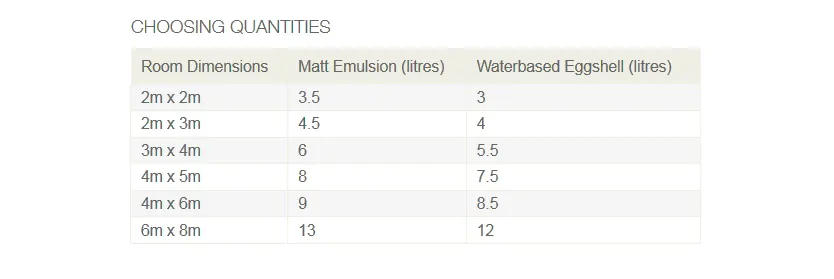
What Paint Finish Should I Buy?
Well this depends entirely on the room and what it is you are painting i.e. plasterboard or woodwork, please see these two helpful guides produced by Zoffany Paint and Sanderson Paint below regarding the appropriate amount, and finish, for different rooms and paint finishes:
